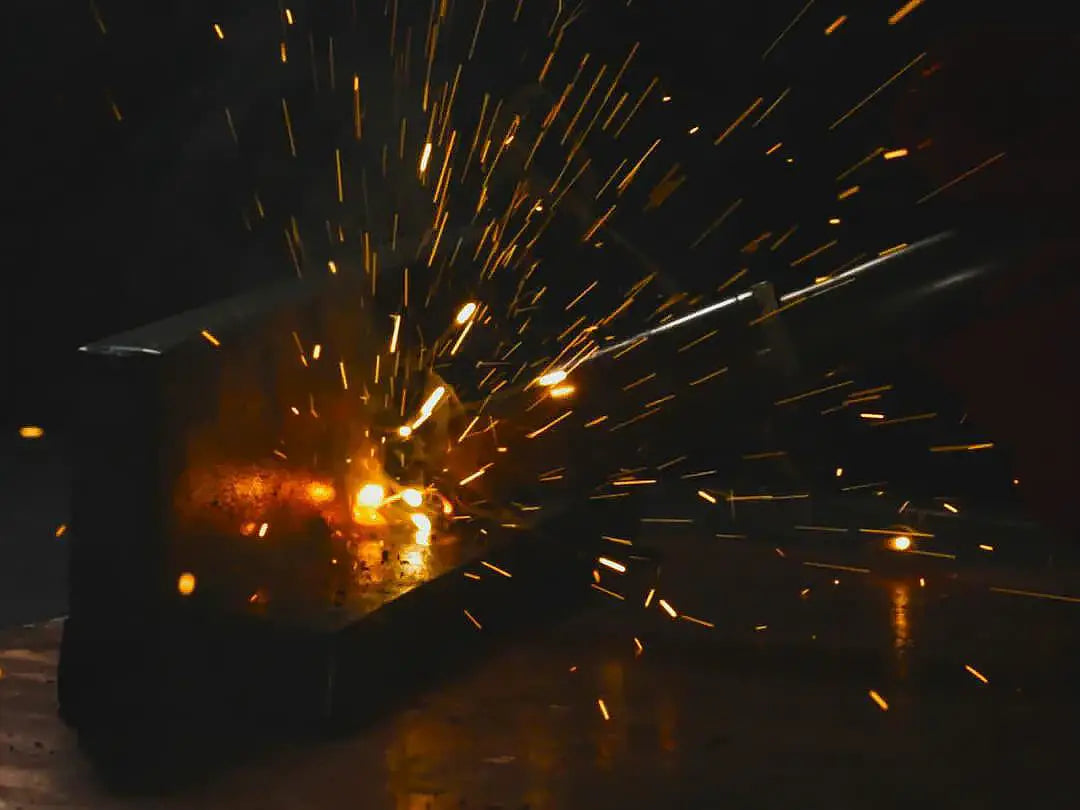When a welding flame spatters, it often leaves welding spatter on the workpiece that must be removed, which takes time and money.
It's better to avoid spills, or at least minimize them, rather than clean them up. Welders can take steps to minimize spatter by using the best welding equipment, preparing materials properly, handling welding guns correctly, and making simple changes to the work environment.
By following these 8 techniques, you can effectively combat welding spatter!

Avoid welding spatter
Why is that so important?
Welding spatter refers to small droplets of metal expelled from the welding area due to the power of the arc, often landing on the workpiece, weld, or welding gun.
In addition to the time and money required for cleanup, welding spatter can cause the following problems:
- Reduce weld quality
- Unclean and unsafe workplaces
- Production stop
Given the problems that welding spatter can cause, it is important to minimize it as much as possible.
With these quick tips, you'll be well equipped.
Let's start by discussing the best welding equipment!
1. Ensure current stability
Maintaining a stable current is crucial to avoiding welding spatter.
To ensure this, the welding gun and return cable must be securely connected to the power source.
The grounding of the part must also be considered. The attachment point and ground clamp must be accessible and have good conductivity to allow effective current flow.

2. Ensure continuous wire feeding
Minimizing welding spatter requires a stable arc.
A stable arc can be achieved through a stable wire feed.
To achieve a stable wire feed, three factors are important:
- Make sure the welding gun is installed correctly (wire feed tube (diameter and length), contact tip, etc.).
- Make sure the trunk line bends as little as possible.
- Adjust the contact pressure of the wire feed roller to suit the welding wire used.
Professional welder Josef Sider says insufficient pressure can cause the welding wire to slip, resulting in wire feeding problems that can quickly develop into spatter problems.

Excessive bending of the trunk line will cause poor wire feeding, resulting in spatter problems

Correct practice: reduce the curvature of the trunk line as much as possible
3. Select the correct shielding gas with the correct flow
To reduce welding spatter, it is important to have adequate shielding gas. Gas flow (a general rule is wire diameter multiplied by 10 for liters per minute) and dry extension length (the distance the wire extends from the contact tip) must be kept short enough to ensure adequate protection against gas.
Gas choice also plays a role in reducing spatter. Welding with pure carbon dioxide gas tends to result in more spatter at higher power levels. The best option is to use a gas mixture rather than 100% carbon dioxide, which reduces the likelihood of splashing.
4. Select appropriate wear parts
It is important to regularly check and replace worn parts to maintain a stable welding process and avoid excessive welding spatter.
Furthermore, choosing the correct welding wire can also affect the formation of welding spatter.
For example, choosing a wire with greater wear resistance can reduce contact tip wear, leading to a more stable welding process with less welding spatter.
Therefore, it is important to choose the right welding wire for your process and application to minimize welding spatter and achieve better results.
5. Apply correct welding parameters
It is important to choose the correct welding parameters to reduce welding spatter. This includes adjusting the intermediate arc power range. Depending on the situation, increasing or decreasing the power can help transition from the droplet transfer arc to the jet arc, which can reduce spatter.
6. Clean materials
Thoroughly cleaned materials are another determinant.
Before welding, all dirt, rust, oil, scale or zinc must be removed from the welding position.
7. Correct operation of the welding gun
Additionally, it is important to maintain a consistent distance between the welding gun and the workpiece. If the distance is too far, the shielding gas and penetration will be affected, causing more spatter during welding.
Keeping the gun at a 15° angle and moving it steadily along the weld line is crucial. The use of “push” welding techniques is not recommended, as this position may result in a significant increase in spatter. Proper welding gun orientation and attention to these details can help reduce the occurrence of welding spatter.
8. Avoid ambient air flow
In conclusion, welding spatter reduction is a combination of using the correct welding equipment, selecting the appropriate welding parameters, and using appropriate techniques. By paying attention to these details, you can minimize welding spatter and make your welding work more efficient and cost-effective.
Or is there a lot of welding spatter?
The welding process can be improved. By taking several techniques into consideration, you can achieve a highly stable arc that minimizes spatter during welding.
For even greater stability and reduced spatter, you can explore innovative welding processes. One such process is the low spatter control (LSC) droplet transfer arc, also known as the “low spatter” welding process. This process is available on the Fronius TPS/i platform and is ideal for those looking for high-quality welds with minimal spatter. It provides exceptional arc performance and excellent results.

Very little spatter during welding – use the LSC welding process
You can take several steps to prevent or at least reduce welding spatter, and you should.
After all, low-spatter welding can save time and money, improve welding quality and ensure a safe working environment.

























































